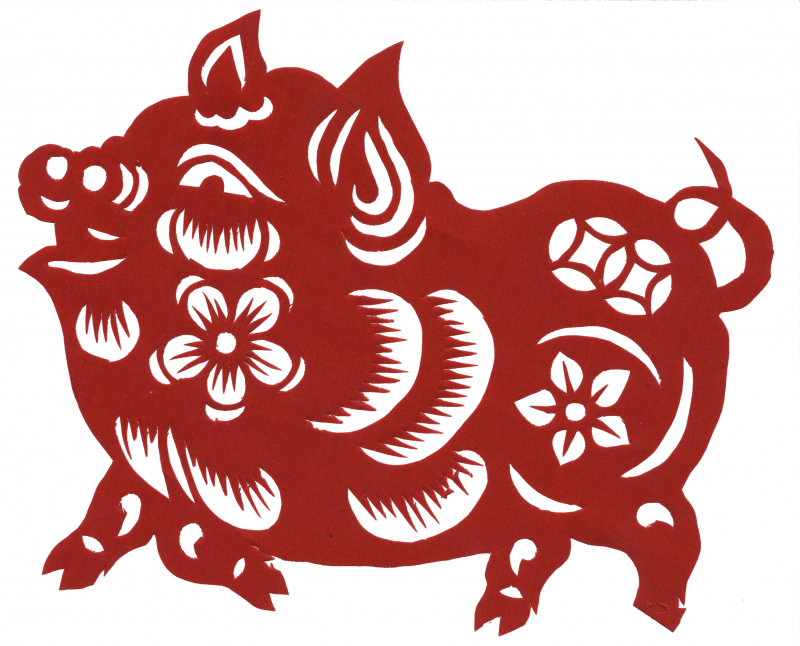Paper Cutting
Chinese paper cutting, a peculiar form of visual art that is uniquely Chinese, has existed for centuries - possibly even longer than the paper itself! Chinese paper-cutting was added to the UNESCO Representative List of Intangible Cultural Heritage of Humanity in 2009. Simple patterns ranging from portraits to animal zodiacs can be made using just a piece of paper, generally a red one, and a pair of scissors.
Chinese paper cut-outs are well-liked decorations used to adorn windows and mirrors due to their affordability and craftsmanship. Inside, an amazing pattern is made when light filters through the cut-outs' negative gaps. A Chinese New Year custom is to decorate windows with paper cuts; these attractive cut-outs are referred to as "window flowers" or (chuāng huā) in Chinese.
A symmetrical circle from the sixth century unearthed in Xinjiang, China, is the earliest surviving paper cutout. The craft of Chinese paper cutting is thought to have begun in China after Ts'ai Lun invented paper in 105 CE. Long before the paper was produced, however, there are accounts of the Chinese carving hollowed patterns into other thin materials such as leaves, silver or gold foil, silk, and leather. People were already cutting tree leaves into various art forms and handing them out as gifts throughout the Western Zhou Dynasty (1046 - 771 BC)!
There is also a lovely folklore about the origins of the first paper-cut: Emperor Wu adored his wife, Concubine Li, during the Han Dynasty (202 BC - 220 CE) of ancient China. He couldn't eat or sleep well after her death because he missed her so much. He yearned to see her again. To meet the Emperor's request, one of the ministers cut out the figure of Concubine Li from linen and placed it up against the tent's low candlelight. Emperor Wu observed the silhouette of his beloved wife from a separate tent and assumed her spirit had returned. The ministers urged the Emperor not to approach the tent lest Concubine Li's soul vanish in order to conceal the falsehood. He composed a sonnet as the shadow vanished to express his sorrow.
As paper became more inexpensive, the art gained favor among the general public and evolved into a traditional handicraft for rural women. Every female was expected to master the profession, and brides were frequently judged based on their abilities. During the Southern Song Dynasty (1127 - 1279 CE), craftspeople, mostly men, made a living by cutting paper. Some were experts at cutting Chinese characters, while others were experts at cutting flowers and other designs. Craftsmen in Jizhou, Jiangxi Province, began pasting paper-cut works on ceramics before glazing and baking them in the kiln to produce colorful designs on the ceramics.
The Ming (1368–1644) and Qing (1644–1912) Dynasties saw the height of paper-cutting art. Almost anything may be decorated with them, including embroidered fabrics, fans, and folk lanterns. The Running Horse Lantern, also known as (zǒu mǎ dēng), was a well-known ornate lantern from the Ming Dynasty. A candle was surrounded by cardboard cutouts of generals riding horses, which rotated as hot air rose from the candle. On the lamp's screen, the cutouts' shadows created the appearance of galloping horses pursuing one another. Then, the designs of the lantern changed to include images of gods and people.
Chinese characters are also widely utilized in traditional paper-cut designs. Some popular characters include ‘福 (fú)’ which denotes blessing, and ‘喜 (xǐ)’ which indicates happiness. It is worth noting that the character ‘喜’ is almost always cut as ‘囍’ and used to symbolize double the happiness during weddings! The Chinese characters frequently contain meanings that symbolize average people's life goals.










